3rd annual NYC KEZ
Kezurou-kai Mini, or NYC KEZ for short, is a gathering in which craftsmen and enthusiasts come together to celebrate Japanese style woodworking.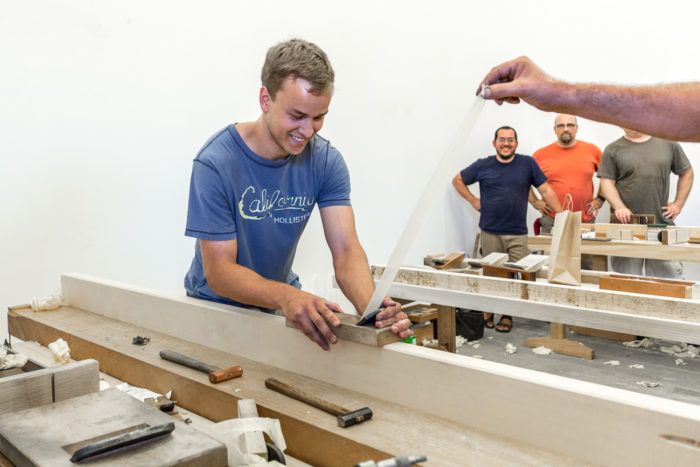
Web Producer’s Note: This is a repost from Brian Holcombe’s blog. Jon Binzen and I both tried, and failed to make it to this year’s KEZ. I was delighted to see this post on Brian’s blog, which I consider one of the best woodworking blogs out there. Brian graciously let us repost it. The fantastic photos were taken by Hudson Valley area photographer Richard A. Smith. – Ben Strano
This year’s 3rd annual NYC KEZ was on Saturday Aug 27th, hosted by Mokuchi in Brooklyn, NY. Kezurou-kai Mini, or NYC KEZ for short, is a gathering in which craftsmen and enthusiasts come together to celebrate Japanese style woodworking. At the heart of this celebration is a planing contest in which the challenge is to produce the thinnest shaving possible from the full length and width of a beam.
The beautiful photography for this post was provided by Richard A. Smith. Richard is a professional photographer, located in the Hudson Valley, with a dedication to his craft that shows through in his spectacular images. I have added a link to Richard’s website at the end of this post.
To officiate the opening of Kez, Yann Giguère, our gracious host and owner of Mokuchi Studio, brought the crowd together to explain how the day’s events would unfold. Yann explained to his audience that the event would display many of the steps taken to bring wood from the log on through to a finished material. The first event, a log splitting, proceeded right after his introduction.
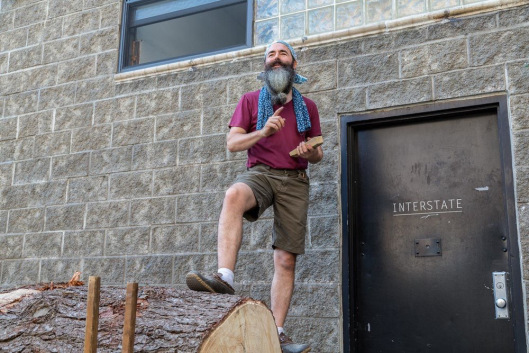
The splitting of a large pine log began with Jim Blauvelt driving a splitting maul held by Andrew Hunter into the log using a commander mallet. To continue the split wooden wedges are driven into the log along the marked ink line.
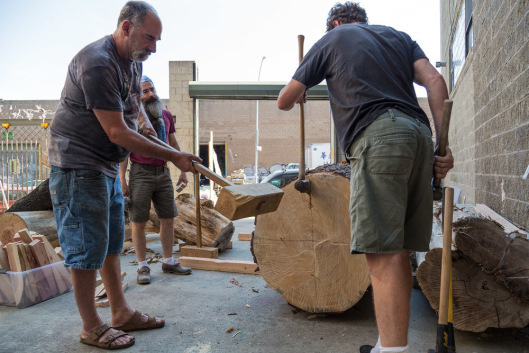
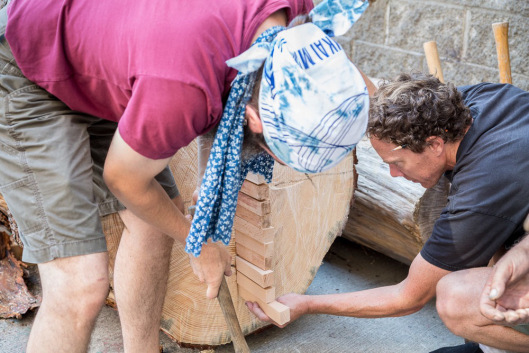
As the split makes its way down the log a series of wedges are driven into the side of the log directing the split. The wedges are increased in size and then doubled up until the log yields to the pressure and becomes two halves.
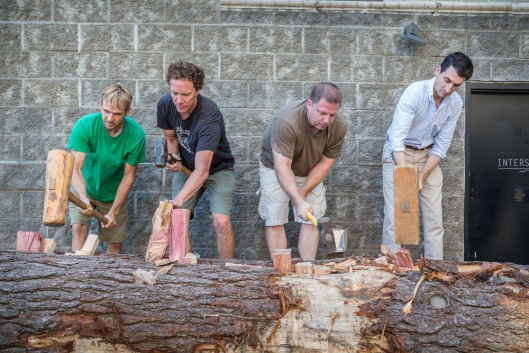

Once the log splits in half, those halves are split once more into quarters. The quarters are then riven down into smaller pieces which are sized for use.
Next, Yann demonstrated hewing with Japanese broad axe and adze, known as the ono and chona respectively. After the bark on this log was removed, heavy ink lines were applied and then material was cleaved roughly to those lines with the ono.

The follow up to this work, which is done to create a more accurate surface, was performed with the chona (Japanese adze). The chona is used to smooth out the facet created with the broad axe. This procedure is repeated on each side of the log and a square beam is created. The chona can be used to create a heavily textured surface finish.
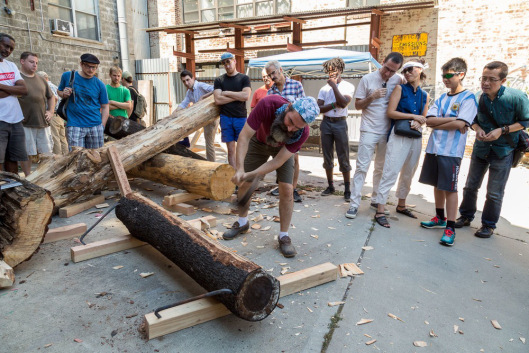
The last process shown in working logs into rough lumber was performed with a saw. The saw, known as the maebiki nokogiri, was used to mill the aromatic cedar log into thin boards. The maebiki is considered a one-man sawmill and was used commonly in Japan until the early part of the 20th century.
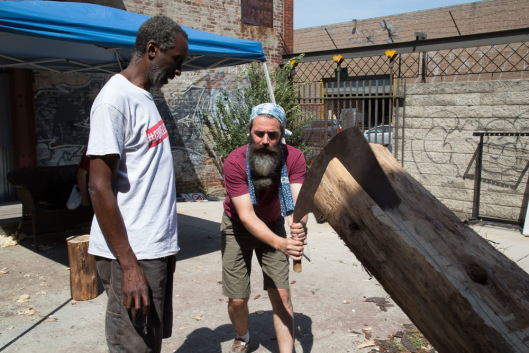
I couldn’t resist trying my hand at the maebiki. The maebiki is a heavy saw but works smoothly and easily.
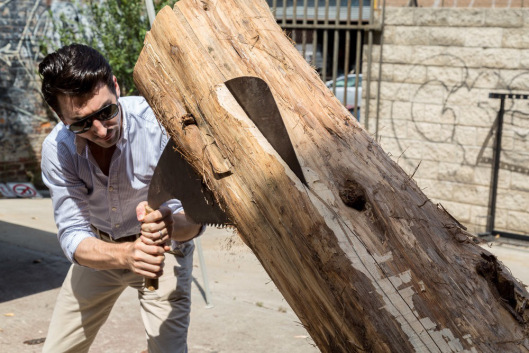
After a board is milled or riven it can be further refined with a plane. Prior to the kanna (Japanese hand plane) of today boards rough hewn by the adze were smoothed with yariganna. The yariganna is a spear shaped plane used in a rowing motion. Once used to refine a surface, today they are used to apply a unique texture to a board.
Jay Speetjens displayed the yariganna at his Two Pines Trading co stand, while encouraging curious on-lookers to give the plane a try. I joined in and found it to be a fascinating tool to use, surprisingly easy to get a handle on.
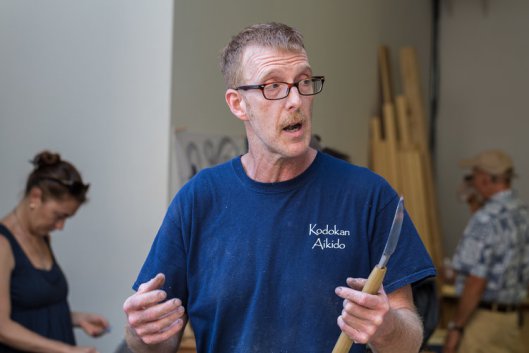
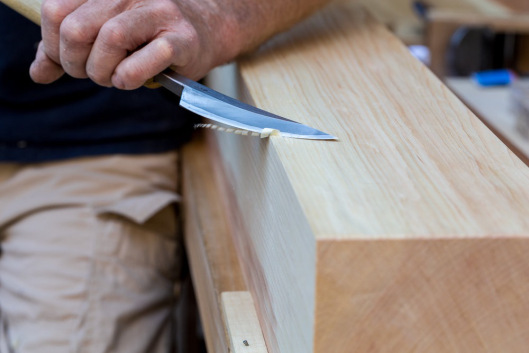
Shibui brought out antique Japanese tools for sale, his area was filled with rare and uncommon kanna, beautiful sumitsubo (Japanese ink line/pot) and more.
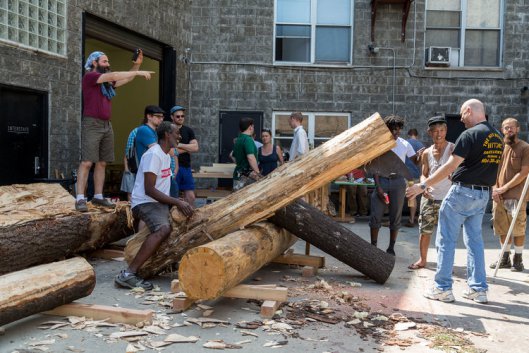
Many of the competitors, who had traveled from as far as Missouri and Canada, arrived the day prior to participate in Intermediate and Advanced Kanna tuning classes held by Mokuchi and taught by Yann Giguère and Jim Blauvelt respectively.
Many of us started tuning during the classes and were tuning all the way on through the end of the evening with Yann and Jim providing insights and commentary on how to make improvements. The information sharing was spectacular and done in a dynamic fashion, with a pin-point problem solving approach that was incredibly effective at improving results.
In the background of all of these festivities the competitors continued sharpening away, readying their blades and continuously tuning their dai.
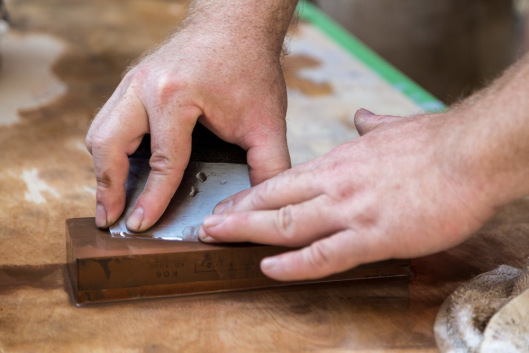

Many competitors were using Japanese natural finish stones as the final step in refining their edges. I was amazed at how often a stone was offered up for a trial, an offer I could not resist in any case.
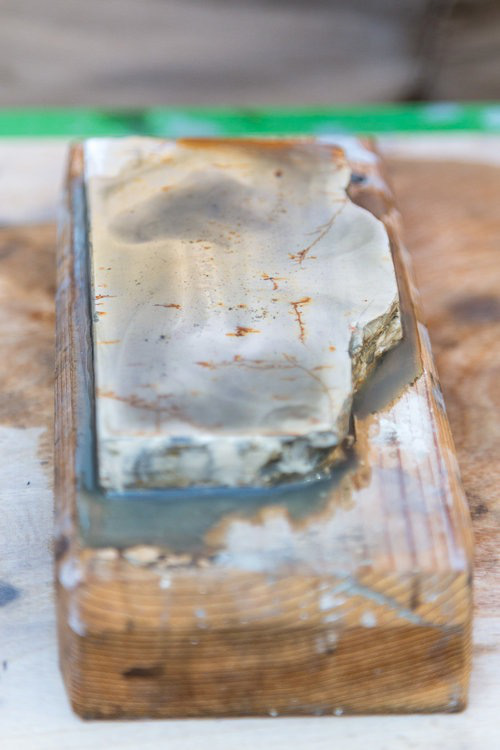
Competitors brought out tools in addition to what they would need to compete, such as Mike Cundall’s Tasai Ookanna.
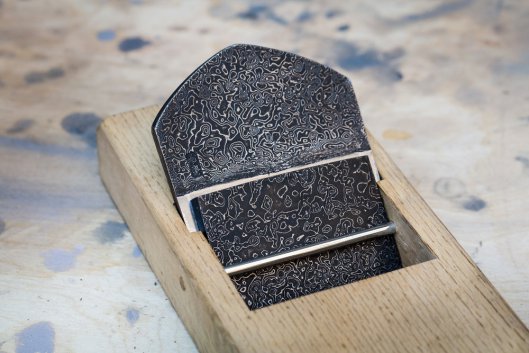
In the early afternoon Jim Blauvelt called the attention of the crowd for a talk on blacksmithing. Jim, proprietor of Bluewater Forge and winner of Kez 2015, provided insights from his experience both making tools and knives as a blacksmith and using them as a joiner. Jim passed around examples of tool steel, heat treated then snapped to display the grain structure at various states.
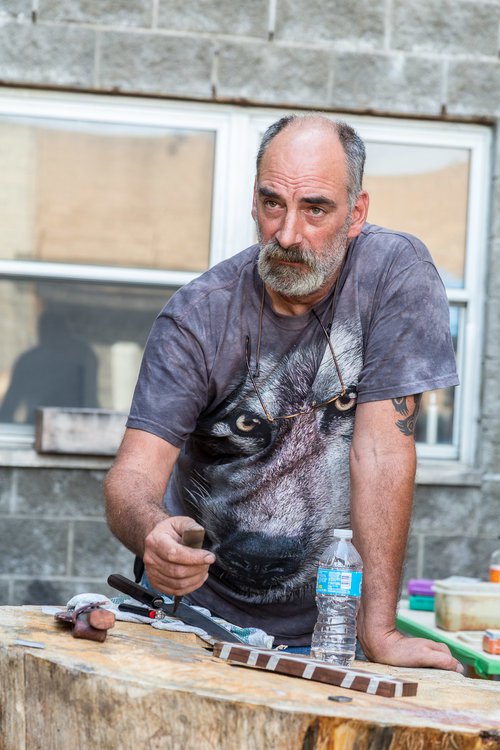
Next began the main event, a planing competition. Yann first explained that the best shaving would be judged not only by how thin it was, but by the quality in total. He further explained that the shaving must be the full length and width of the beam and also must be unbroken. Given two identical thickness shavings the one with a better appearance would have advantage. To pull such thin shavings the wood required must be incredibly finely grained, the wood was provided by Mokuchi and it is temple grade Alaskan Yellow Cedar.
Jim Blauvelt judged the contest and the first contestant was Jay Christian. Jay started things off with a beautiful and incredibly thin shaving.
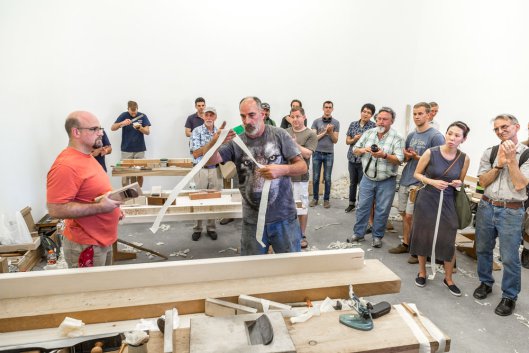
Each contestant was given the option of having the board resurfaced with the official ‘zamboni plane’. Andrew Hunter followed with his own see-through cedar shaving.
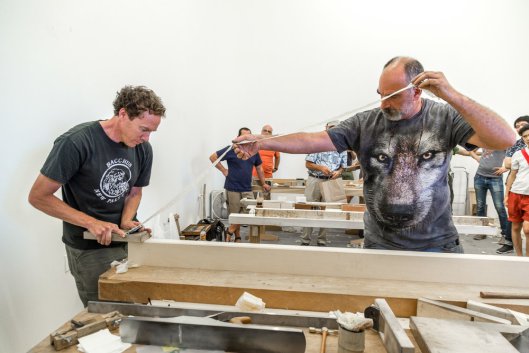
Followed by Jay Speetjens.

Phillip Fuentes was next to compete.

Jon Billings stepped up to the beam next and cut an 8 micron shaving!

He was followed by Jude Noteboom who produced a nearly identical shaving.
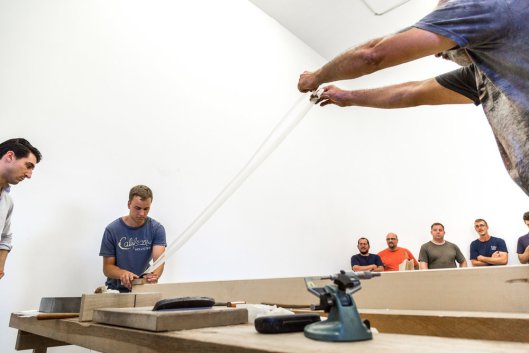
Next to show his talent for tuning, Wilbur Pan.
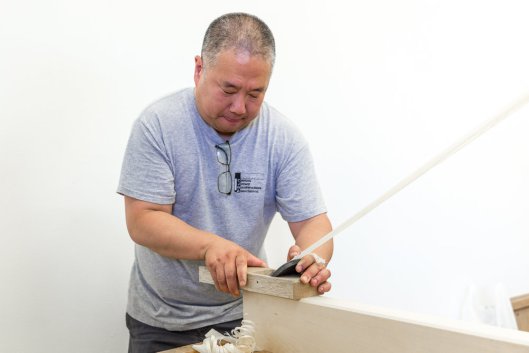
Joe Locke followed with a very fine shaving.
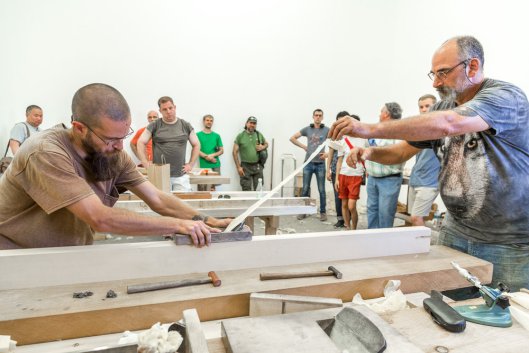
Next to make a lap was Mike Cundall.

Courtesy of Jude Noteboom
I happened to be the final competitor. I recall some nervous looks from Jon and Jude but my shavings were not quite thin enough!
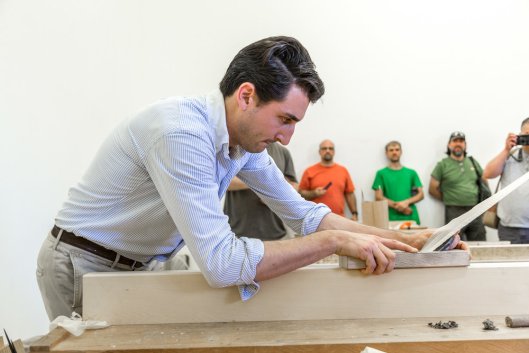
Yann and Jim judged the shavings and then called out the winner, Jon Billings, who took first place with a beautifully cut 8 micron shaving. Jon took home a Japanese natural sharpening stone, the first prize, which was sponsored by Mokuchi.
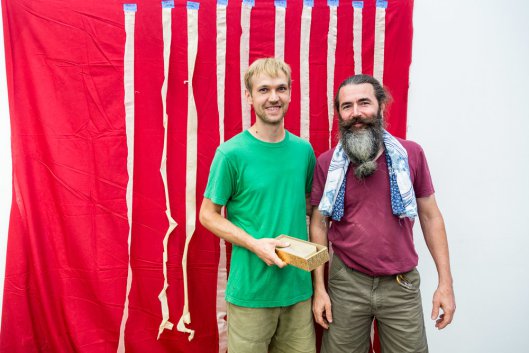
Jude Noteboom took second place with an equally thin shaving but with one minor flaw. Second prize was a handmade kiridashi in the shape of a fish. Second prize was sponsored by Walter Ambrosch.

A wonderful time was had by all at Yann’s oasis of Japanese carpentry in Brooklyn, NY. The event captured the true spirit of camaraderie and sharing that prevails in those that practice the art and many, including myself, are already looking forward to next year. I hope that you’ve enjoyed this post and I look forward to your comments.
Jim Blauvelt’s Bluefield Joiners
Jay Speetjen’s Two Pines Trading Co.






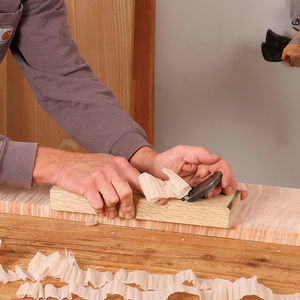















Comments
good times. thanks for the article.
They are professionalist in their work
Log in or create an account to post a comment.
Sign up Log in